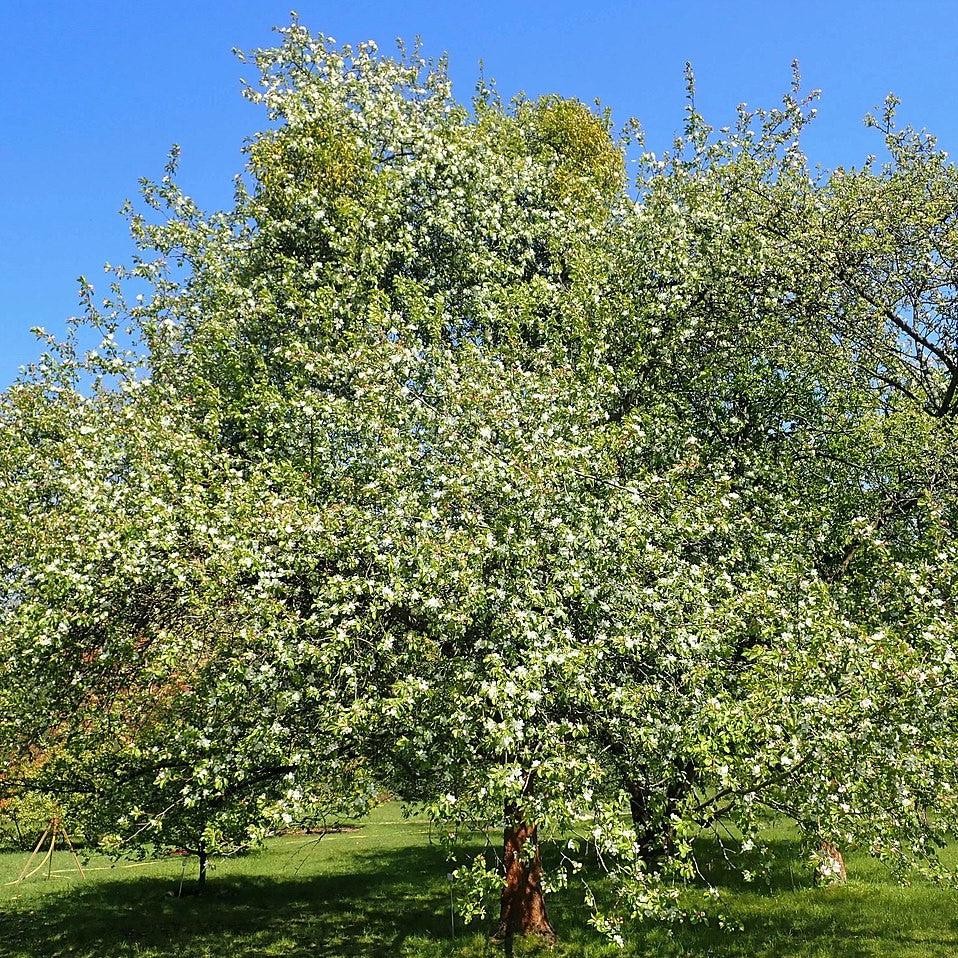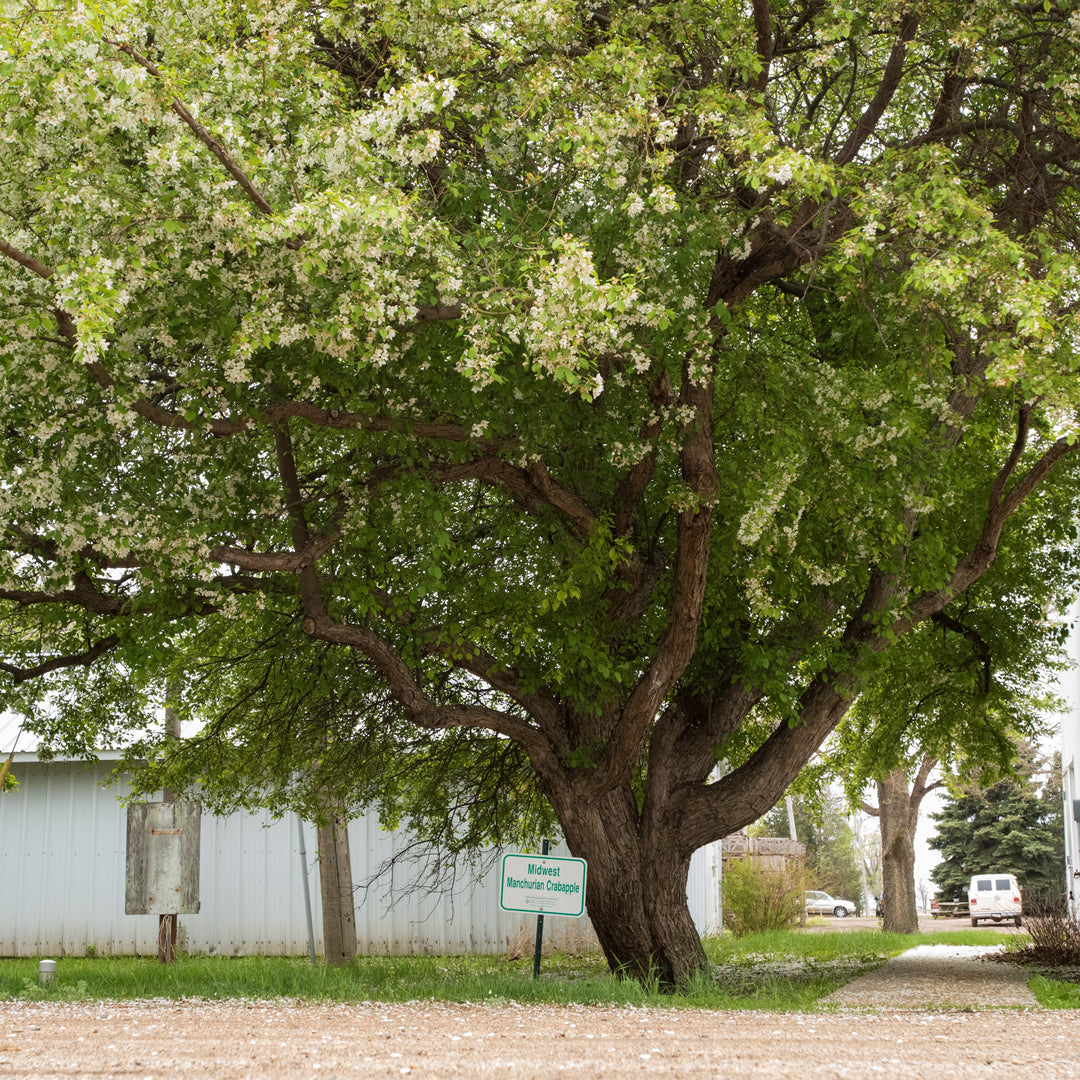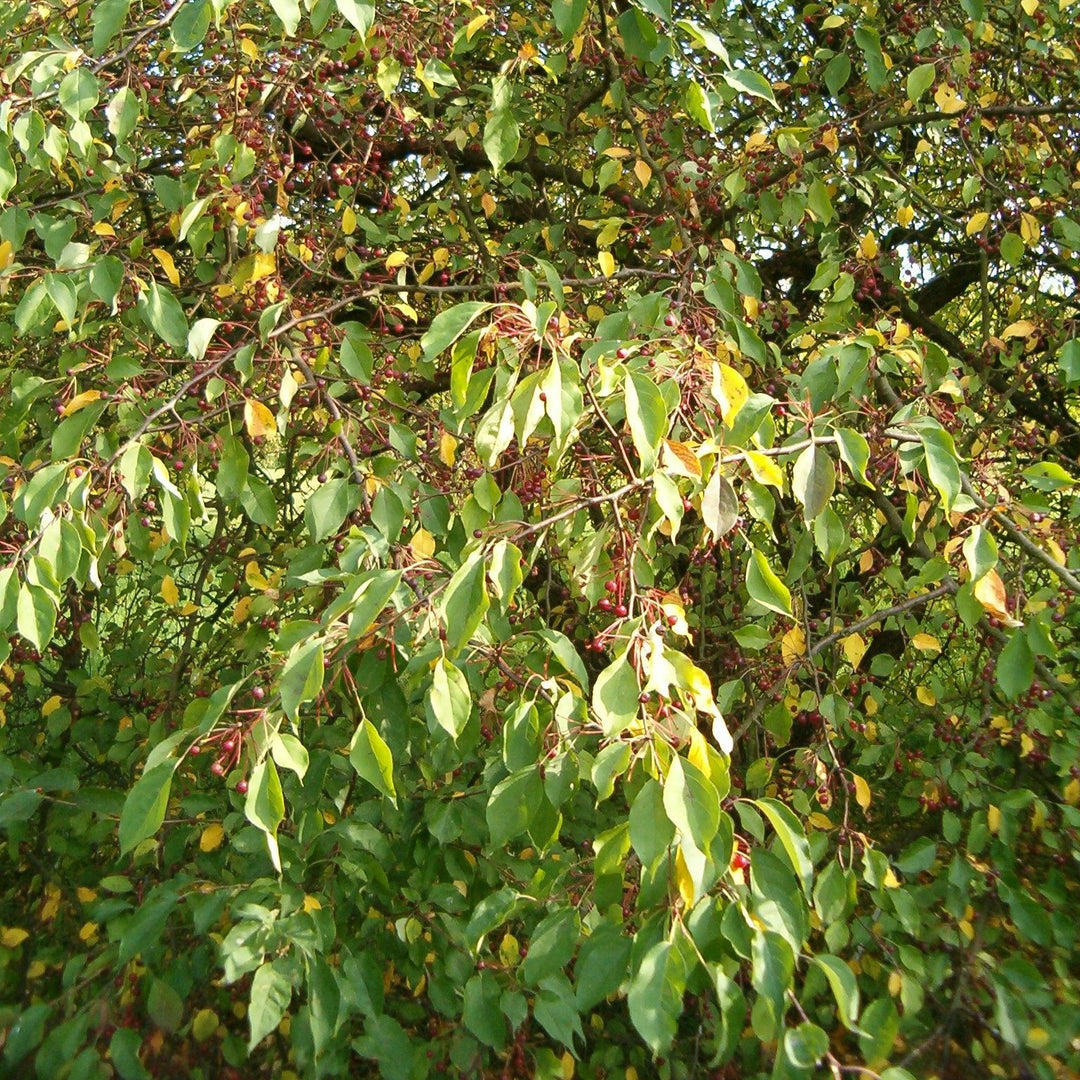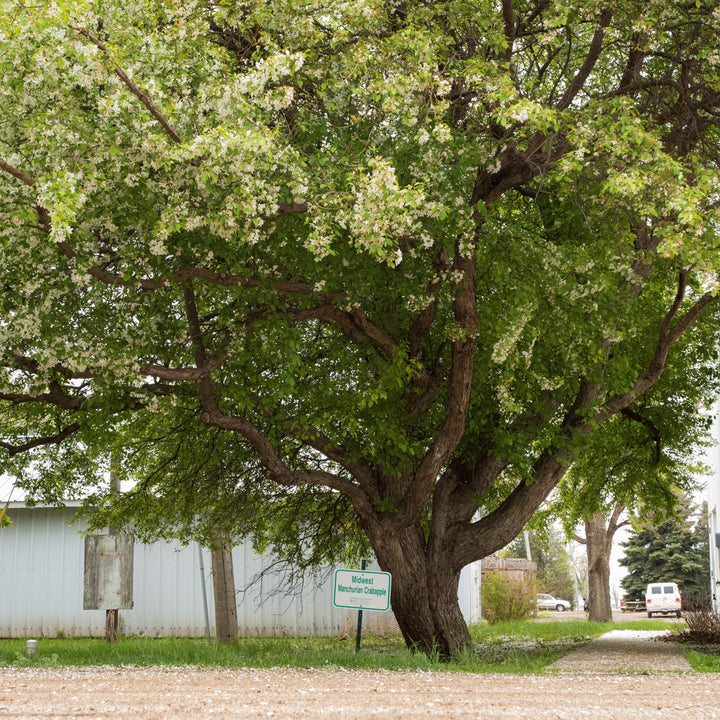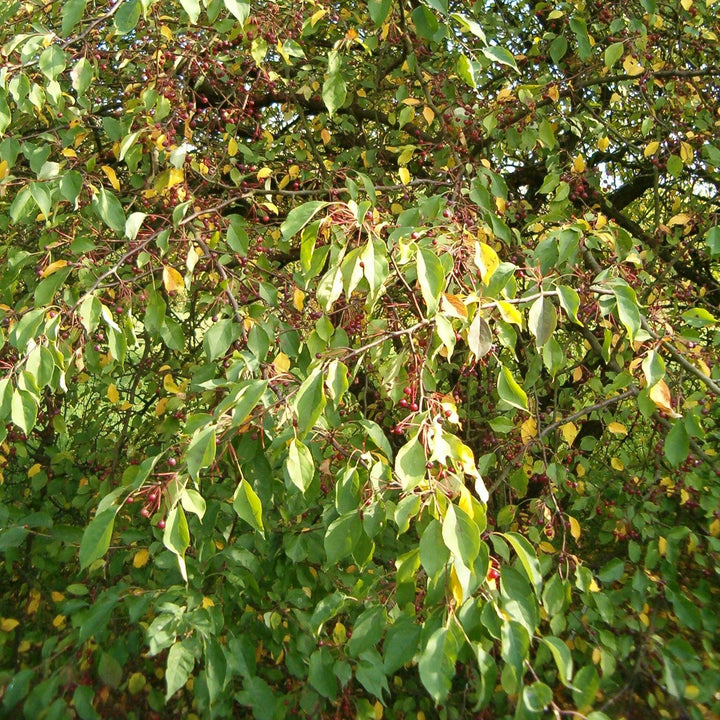The Manchurian Crabapple, also known as Malus baccata, is a deciduous tree native to eastern Asia, particularly China, Korea, and Russia. Here are some key details about this tree:
-
Appearance: The Manchurian Crabapple typically grows to a height of 20-30 feet (6-9 meters) and has a rounded or spreading crown. It has dark green leaves that turn yellow in the fall, adding a touch of autumn color to your landscape.
-
Flowers: One of the highlights of the Manchurian Crabapple is its beautiful spring blossoms. It produces clusters of fragrant, pink or white flowers that cover the tree in a stunning display. These blossoms attract pollinators like bees and butterflies.
-
Fruit: After the flowers fade, the tree develops small, round fruit that resembles tiny apples. The fruit starts green and turns yellow or red as it ripens. While the fruit is edible, it is quite tart and is typically used for making jellies, preserves, or cider.
|
Type: |
|
|
Origins: |
East Asia and Eastern Russia |
|
Height: |
30' - 40' |
|
Spread: |
30’ - 40' |
|
Spacing: |
35' |
|
USDA Hardiness Zone: |
3 - 8 |
|
Culture: |
|
|
Bloom Color: |
White |
|
Season of Interest: |
MAINTENANCE NEEDS: High Maintenance. Water Regularly. Potential issues include apple scab, cedar apple rust, fire blight, leaf spot and and powdery mildew. Possible pests are aphids, maggots, boreres, and spider mites. Avoid pruning in spring.
LANDSCAPE USES: Accents or Group Plantings, Borders, Wildlife Gardens, Shade Tree, Edible Garden, and Container.
COMPANION PLANTS: Apple, Shasta Daisy, Bugleweed
IMAGES: Salicyna, Malus mandshurica 2019-04-16 0644, CC BY-SA 4.0, (2) Salicyna, Malus mandshurica 2019-04-16 0632, CC BY-SA 4.0, (3) anonymous, Malus sacchaliensis HabitusFruitsLeaves BotGardBln0906, CC BY-SA 3.0, (4) Sirius_MSK, Цветущая яблоня маньчжурская на экспозиции хвойных видов растений на 51-м участке дендропарка, CC BY-SA 4.0, (5) Salicyna, Malus mandshurica 2019-04-16 0642, CC BY-SA 4.0, (6) A.Savin, Botanischer Garten Berlin-Dahlem 10-2014 photo11 Malus mandshurica, CC BY-SA 3.0
* As plants have ranges in appearance they may not appear as the images shown.


